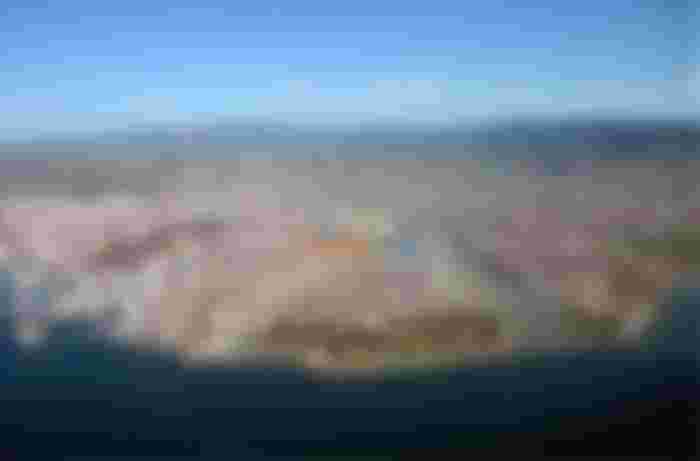Çanakkale Guide!
Çanakkale, which was known as Hellespontos and Dardanel in ancient times, was founded in BC. It has been a residential area since 3000 years. Çanakkale, which has been an important settlement since the Early Bronze Age; Thanks to the Dardanelles, it is one of the two passage regions that provide the connection between Anatolia and Europe and between the Mediterranean and the Black Sea. Due to this feature, it has a very rich history. It has provided economic and military superiority to the communities living in the region, and they have surpassed their contemporaries in the field of civilization. However, this situation has made the region the target of various migration and invasion movements. There were people who came to the region to settle or plunder on different dates, and in both cases, certain cultural exchanges were intensified.
This cultural mixing continued with interruptions for centuries, and as a result, a very colorful cultural mosaic emerged. In the narrowest part of the Bosphorus, during the reign of Mehmet the Conqueror, castles called Kilitbahir around Sestos on the Rumeli side, and Sultaniye (Kale-i Sultaniye) or Çanak Castle around Abydos on the Anatolian side were built. The name of today's Çanakkale Province comes from the Çanak Castle on the Anatolian side. The oldest people of the region are the indigenous people of the Chalcolithic Period, known from the Beşiktepe and Kumtepe settlements. These, I.O. From the 3000s to the 1200s, the people of Troy continue their lives without any external influence. After that, various tribes came with the Trojan Wars, the Achaeans, and the Aegean migrations, respectively. Finally, after the death of the Sicilian Commander Roger De Flor, the Catalonians under his command continued their activities for a while, but later on, as per an agreement they made with the Turks, they left Çanakkale and its region to the Turkish Beys. B.C. Founded in 3000, Troia I, BC. It was destroyed by an earthquake in 2500 years. It is known that there were ancient settlements in the region before that. It is thought that the city of Dardanos was founded before Troy I. Its establishment priority is around 100-150 years. B.C. With the migration of "Sea Peoples" from the north in the 1200s, a dark period began in the region and in Anatolia in terms of written history.

Region, BC. In the 7th century, it was dominated by the Lydian Kingdom, which became a great power in Western Anatolia, BC. With the arrival of the Persians in the 5th century, Persian influence began to increase. With the "King Peace" made between the Persians and the Spartans in 386, Persian domination was assured in the region. B.C. In 334, when the Macedonian King Alexander the Great defeated the Persian army near the Biga Stream (Granikos), Persian dominance began to decline in Anatolia. After the death of Alexander, Alexander's commanders engaged in a power struggle in the region. After the domination of the Pergamon Kingdom and the invasions of Galatians, Dictator Sulla came to Gallipoli during the efforts of Rome to establish dominance in the region. The region gained importance with its ports during the Roman and Byzantine periods. The Ottomans' desire to establish dominance in the Mediterranean led them to start the conquests in the Balkan Peninsula from Gallipoli and its region. With the establishment of a shipyard in Gallipoli, the Ottoman dominance in Çanakkale increased even more. The Importance of the Bosphorus came to the fore once again in the Dardanelles Wars (World War I) and the enemy navy was defeated on March 18, 1915.
GEOGRAPHY
Çanakkale is located on both sides of the Bosphorus, which separates the European and Asian continents from each other in the northwest of Turkey and bears its name. Balıkesir is located in the east and southeast of Çanakkale, there is the Aegean Sea in the west, Edirne in the northwest, Tekirdağ and the Marmara Sea in the north. The province has lands in the Aegean and Marmara Regions. Its surface area is 9737 square kilometers and its coastline is 671 kilometers. Due to its location, it shows a transitional climate between the Mediterranean and Black Sea climates. Rainfall is generally seen in spring and winter.
ITS POPULATION
The population of Çanakkale is 511,790 according to the 2014 census. With a population density of 52, Çanakkale ranks 43rd among other cities in terms of total population size.
ECONOMIC STRUCTURE
Although agriculture is the most important activity in the provincial economy, agriculture-based industries have developed in recent years and the share of industry in the economy has increased accordingly. 73,563 of them work in the services sector. Unemployment rate in the province is 3.6%. Forests cover 54%, agricultural land 34%, meadows and pastures 5%, and non-cultural lands 7%. 81% of the agricultural land is field land, 6% is vegetables, 2% is fruit, 2% is vineyards, and 8% is olive groves. The total agricultural area of the province is 330,337 Ha. and 120.000 Ha. is irrigable land. A total area of 60,711 ha (50.6%) is irrigated, and 39,457 ha (65%) of this irrigation is carried out by the state. Grain takes the most important place among the agricultural products grown, both proportionally and as cultivation area.
ASSOS
It is in Behramkale village of Ayvacik district. It is thought to have been founded by the Methymnas from Lesbos in the VII century BC. Established on a hill that dominates both the sea and the land, the Acropolis is 3 km. is long. Doors made in different ways are interesting. The Temple of Athena, which was built on its highest place, the Agora where the official structures of the period are located, the lectern, the Bouleterion (Assembly) consisting of statues and small monumental structures, the Gymnasium, Theatre, the Stoa and the Necropolis from the Hellenistic-Roman periods are the most important parts of the Acropolis. Also in Ayvacik District; Cyryse in Gülpınar Gardens, Temple of Apollo Simintheus, one of the three temples in Anatolia whose columns are decorated with figured tanburs (others are Temple of Ddyma Apollo and Ephesus Artemis), Adatepe Zeus Altar mentioned in Homer's Iliad, Roman bridge in Gülpınar Subdistrict, Babakale Mosque in Babakale, built by Kaymak Mustafa Pasha in the 17th century, Behramkale Village Hüdavendigar Mosque built on a high hill near the ruins of Assos, and Behramkale Bridge built of local stones, built on Tuzla Stream, are worth seeing. BC Vll . There are always vehicles from Çanakkale to Assos City Ruins, which was founded in the 19th century and where Aristotle opened the School of Logic.
